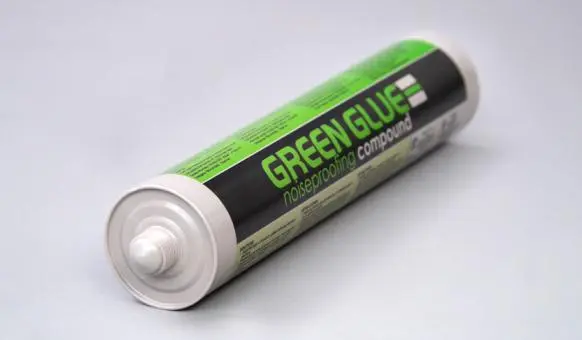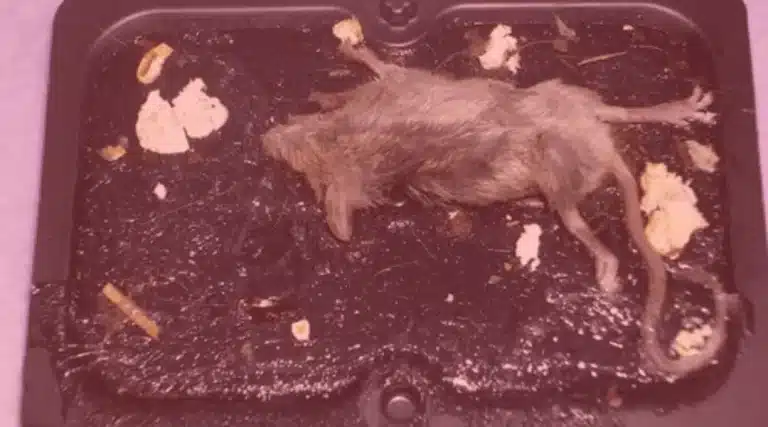Java moss is a popular aquatic plant that can add beauty and depth to aquariums. It is known for its ability to thrive in different water conditions and provide shelter for small fish and shrimp. If you are looking to enhance the aesthetics of your aquarium, you may be wondering if it’s possible to attach Java moss to rocks.
Attaching Java moss to rocks can create a natural-looking landscape in your aquarium. However, it requires careful preparation and execution to ensure that the moss stays firmly attached without harming your aquatic creatures or disturbing the water quality.
In this article, we will discuss the steps involved in attaching Java moss to rocks, including how to prepare the moss, what supplies you need, and how to maintain it once it’s attached. Whether you’re a beginner or an experienced aquarist, this guide will help you achieve a stunning aquatic setup while ensuring the safety of your aquatic inhabitants.
Key Takeaways
- Java moss can be attached to rocks using aquarium-safe glue and fishing line.
- Proper cleaning and trimming of the moss before attaching can encourage new growth.
- Overcrowding rocks can lead to poor lighting conditions and insufficient water flow, affecting moss growth.
- Regular maintenance and proper water parameters are crucial for a healthy and natural-looking aquascape.
Gather Your Supplies
The first step in the process of gluing Java moss to a rock involves gathering all necessary supplies. To effectively glue Java moss to a rock, you will need certain supplies such as aquarium-safe glue, scissors, and rocks.
It is important to ensure that the rocks used are non-toxic and safe for your aquarium environment. Some popular options include lava rock or slate.
Once you have gathered all necessary supplies, you can move on to preparing the Java moss for gluing onto the rock.
Prepare the Java Moss
To properly attach Java Moss to a surface, it must first be thoroughly cleaned and trimmed of any excess or dead plant matter. The cleaning process is crucial to ensure that the moss is free from any dirt or debris that might prevent it from attaching well to the rock.
Proper trimming is also essential as it helps remove unhealthy parts of the plant and encourages new growth. To clean the moss, rinse it with freshwater several times until all dirt particles are removed.
Next, trim off any brown or yellow portions using a sharp pair of scissors. Make sure to leave only healthy green parts of the plant as these are the areas that will grow and attach best to the rock’s surface.
After completing this preparation step, you can now proceed with attaching Java Moss to rocks by following specific methods such as tying or gluing them securely onto their surfaces.
Attach the Java Moss to the Rocks
When attaching Java Moss to rocks, it is important to apply a small amount of glue to the rock surface before securing the moss with fishing line. This ensures that the moss will remain in place and not detach from the rock.
Additionally, allowing time for the moss to attach itself naturally will increase its chances of survival and growth.
Following these steps will result in a secure and healthy attachment of Java Moss to your aquarium rocks.
Apply a Small Amount of Glue
Applying a small amount of glue to affix java moss onto a rock can be an effective technique for creating visually appealing aquatic landscapes. Before choosing any glue, it is important to consider the types of glue that are safe for aquariums and avoid those with harmful chemicals or toxins.
Cyanoacrylate-based glues, commonly known as superglue, are popular options due to their strength and quick drying time. However, it is important to use them sparingly and only on non-porous surfaces as they can release toxins in water if used excessively. Another option is silicone sealant which is safe for aquariums but requires more time to dry and may not bond as well as cyanoacrylate-based glues.
While using glue can provide a secure attachment for java moss, it has its downsides such as changing the pH level of the water or leaving behind ugly residue if not applied correctly. It’s crucial to follow instructions carefully when applying glue and test it first before attaching moss onto larger rocks or ornaments.
To ensure that the glued java moss stays in place, fishing line can be used to further secure it onto the rock before submerging into water.
Secure the Moss with Fishing Line
One additional method for ensuring the stability of aquatic landscapes involves the use of fishing line to anchor plant life in place.
When attaching java moss to rock, it is necessary to secure it firmly so that it does not come loose and float around, potentially damaging other plants or clogging filters.
While a small amount of glue may be applied to help attach the moss initially, using fishing line can provide an additional layer of security.
It is important to choose a sturdy fishing line that will not easily break under water pressure and tie it tightly around the rock and moss.
Alternatives to fishing line include cotton thread or thin wire, but these may not hold up as well in a submerged environment.
Additionally, moss growth rate should be taken into consideration when anchoring with fishing line; if the moss grows too quickly or becomes too dense, it may start to pull away from its anchor point.
Allowing time for the moss to attach firmly before removing any supports will ensure that it stays in place long-term without causing any harm to other aquatic life forms nearby.
Allow Time for the Moss to Attach
For successful anchoring of aquatic plant life, it is crucial to allow sufficient time for the moss to firmly attach itself to its anchor point. Java moss growth offers many benefits including providing a natural filtration system and serving as a hiding place for fish fry. It is important to note that while java moss can be attached to rocks using glue or fishing line, allowing time for the moss to attach naturally will ensure long-term success. Tips for maintaining healthy moss include keeping water parameters stable and avoiding excessive direct light exposure. Once the moss has securely attached itself, you can then proceed with placing the rocks in your aquarium as desired.
Place the Rocks in Your Aquarium
When it comes to placing rocks in your aquarium, there are a few key points to consider.
Firstly, the placement of the rocks should be thoughtfully planned out, taking into account factors such as water flow and potential hiding spots for fish.
Additionally, creating a natural-looking aquascape is important in order to provide a comfortable environment for aquatic life.
This can be achieved by arranging the rocks in a manner that mimics natural formations found in bodies of water.
Consider the Placement
To ensure successful attachment of java moss to a rock, it is important to carefully consider its placement. Choosing appropriate rocks that are not too smooth or porous will provide better anchorage for the java moss. Additionally, overcrowding the rocks in the aquarium should be avoided as this can lead to insufficient water flow and poor lighting conditions which may hinder the growth of the moss. A well-placed rock with ample space around it will allow for proper water circulation and light penetration, ensuring healthy growth of your java moss. Creating a natural-looking aquascape can also be achieved by strategically placing your rocks and plants in a way that mimics nature’s design. By considering these factors when placing your rocks, you can improve the chances of success in attaching java moss to them and create an aesthetically pleasing aquarium environment.
Create a Natural-Looking Aquascape
Achieving a natural-looking aquascape is crucial in creating an aesthetically pleasing aquarium environment, and this can be achieved by strategically placing rocks and plants in a way that mimics nature’s design.
To create a natural-looking aquascape, consider the inspiration and design tips provided by nature itself. Pay attention to how rocks are placed in streams or rivers, for example, as they provide shelter and hiding places for aquatic creatures. Use natural materials such as driftwood or stones to enhance your aquascape instead of artificial decorations.
Use java moss to give your aquarium a more organic look and feel; it grows over rocks and other surfaces, giving the impression of a naturally occurring growth. Other plant options include ferns or bamboo shoots which add depth and texture to the overall aesthetic appeal of the aquarium.
By incorporating these elements into your aquascaping project you can achieve an environment that not only looks beautiful but also provides a sense of security for the fish living within it.
In order to maintain java moss on rocks, there are several key steps you must follow… …including attaching the moss securely to the rocks using fishing line or super glue, regularly trimming and cleaning the moss to prevent it from becoming overgrown and blocking water flow, and providing adequate lighting and nutrient levels for healthy growth.
Maintain Your Java Moss
Proper maintenance of java moss involves regularly trimming any dead or yellowing portions and gently cleaning the plant to prevent algae growth.
Benefits of maintaining your java moss include promoting healthy growth and preventing the spread of disease.
If left unattended, java moss can become overgrown and start to die off, which can lead to unsightly brown patches in your aquarium.
Troubleshooting common issues with java moss may involve adjusting lighting levels or water flow rates to provide the ideal growing conditions for your plants.
Additionally, it may be necessary to remove excess debris or algae buildup from the surface of your rocks or other aquascape elements that host your java moss.
By staying on top of regular maintenance tasks, you can enjoy a thriving aquatic environment that is both beautiful and safe for your fish and other aquatic creatures.
Conclusion
In conclusion, gluing Java moss to rocks is a simple process that can enhance the aesthetic appeal of your aquarium.
The first step is to gather all the necessary supplies, including scissors, glue, and rocks.
Next, prepare the Java moss by cleaning it thoroughly and trimming any excess growth.
Then, attach the moss to the rocks using a small amount of glue or thread.
It is essential to place the rocks in your aquarium carefully and ensure they do not disturb any existing plants or fish.
Additionally, maintaining your Java Moss requires regular trimming to prevent overgrowth and monitoring water quality levels for optimal health.
Overall, gluing Java moss to rocks can provide numerous benefits for both you and your aquatic pets.
By following these simple steps and implementing proper maintenance techniques, you can add an attractive element to your aquarium while also promoting a healthy environment for your aquatic life.




